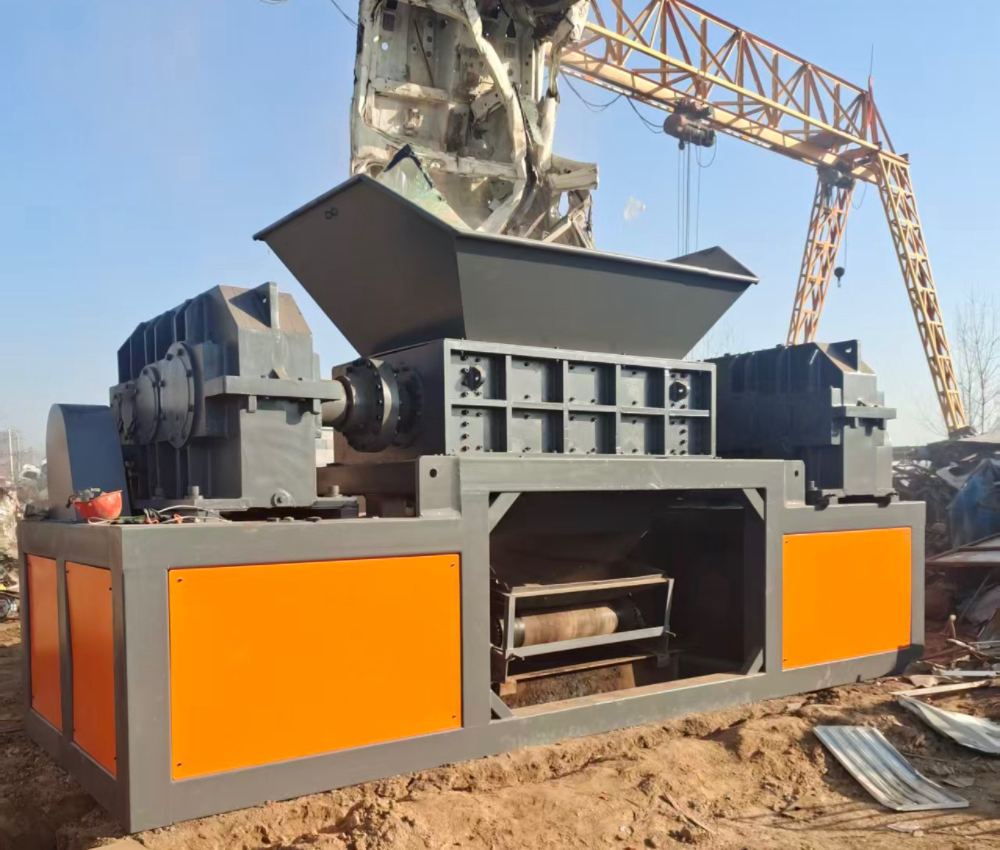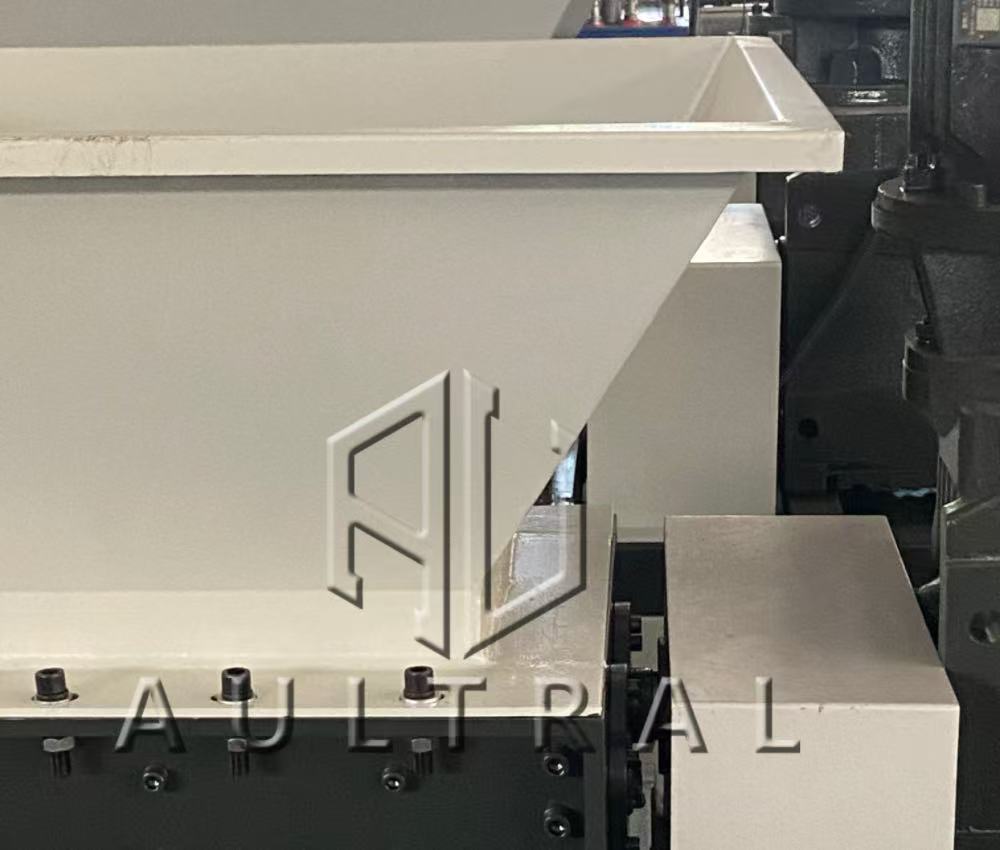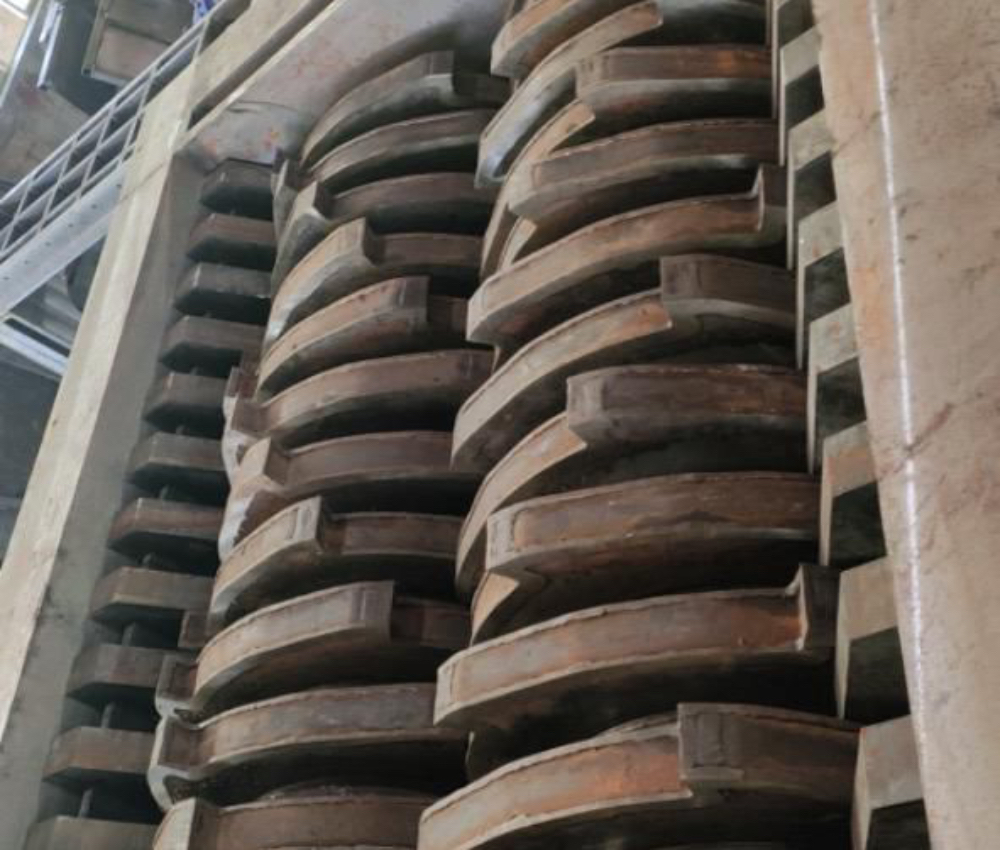What Is An Industrial Shredder?

Industrial shredders come in multiple types, including single-shaft, double-shaft, and four-shaft models. Each type offers unique advantages depending on the materials being processed. They help streamline waste handling, improve recycling efficiency, and reduce storage and transportation costs.
Large industrial shredders are equipped with high-power motors, durable blades, and sometimes conveyor systems to ensure continuous, efficient operation. By converting bulky materials into smaller pieces, these machines facilitate downstream processing, such as sorting, recycling, or baling.
Why Industrial Shredders Are Essential

Waste Volume Reduction
Industrial shredders significantly reduce the size of waste materials, which saves storage space and makes transportation easier and more cost-effective. Large pieces of metal, wood, or plastic can be hazardous and difficult to handle, but shredders make these materials manageable.
Environmental Sustainability
Shredding materials is the first step in effective recycling. By processing plastics, metals, paper, and textiles, businesses can reuse and recycle valuable resources, reducing landfill waste and promoting sustainability.
Safety And Compliance
Industrial shredders allow the safe handling of hazardous or bulky materials, helping businesses comply with local and international waste management regulations. They minimize the risks associated with manual handling and ensure safer operations.
Operational Efficiency
Shredded materials are easier to transport, sort, and feed into downstream machines like balers, compactors, or recycling lines. This improves overall efficiency and reduces labor costs, making the entire recycling or production process more streamlined.
How Industrial Shredders Work

Industrial shredders operate using rotating blades, shafts, or cutting cylinders that tear, crush, or slice materials. The mechanism varies by shredder type:
-
Single-Shaft Shredders: Equipped with one rotating shaft, ideal for soft to medium materials like paper, textiles, and plastics. They often include screens to control output size.
-
Double-Shaft Shredders: Have two counter-rotating shafts that provide high torque, capable of handling tougher materials such as metal, wood, and rubber. They are widely used in recycling industries for shredding bulky waste.
-
Four-Shaft Shredders: Advanced models with four cutting shafts, allowing precise control over material size. Suitable for mixed waste streams and highly demanding applications.
Many modern shredders are integrated with conveyor systems, enabling automatic feeding and discharge. This reduces manual labor, maintains a consistent workflow, and improves overall processing speed.
Applications Of Large Industrial Shredders
Large industrial shredders are versatile and can handle a wide variety of materials:
Plastic Recycling
Shredders can process plastic bottles, containers, packaging, and industrial plastics, making them ready for melting, molding, or other recycling processes.
Metal Recycling
Shredders are essential in processing scrap metals, aluminum sheets, and metal parts. By reducing their size, metals become easier to transport and recycle.
Wood And Furniture Waste
Wood pallets, furniture, timber offcuts, and other wood waste can be shredded into smaller pieces, suitable for biofuel, composting, or recycling.
Paper And Cardboard
Shredders help recycling plants manage paper, cardboard, and packaging efficiently. Shredded paper can be reused in producing recycled paper products.
Textiles And Clothes
Old clothes, cotton, and fabrics can be shredded to produce textile fibers for new clothing or insulation materials.
Rubber And Tires
Shredding used tires and rubber allows them to be processed into rubber granules for industrial use, playground surfaces, or road construction.
Electronic Waste
Industrial shredders can handle electronic waste (e-waste), such as old computers, appliances, and circuit boards, enabling safe recycling of metals and plastics.
Key Features To Look For
When selecting a large industrial shredder, consider the following features:
-
High-Power Motor: Provides the necessary torque for cutting dense materials.
-
Durable Blades: Made from high-quality steel to resist wear and tear.
-
Adjustable Output Size: Ensures shredded pieces meet specific requirements.
-
Automatic Feeding System: Reduces manual labor and improves efficiency.
-
Safety Features: Emergency stop, overload protection, and safety guards to protect operators.
-
Conveyor Integration: Optional conveyors streamline material handling from feeding to discharge.
Benefits Of Using Industrial Shredders
-
Cost Savings: Reduces volume, storage, and transportation costs.
-
Environmental Impact: Supports recycling and waste reduction efforts.
-
Efficiency: Streamlines handling and processing for high-volume operations.
-
Versatility: Can process a wide range of materials in one machine.
-
Safety: Minimizes risk associated with manual material handling.
Maintenance Tips
To maximize the lifespan and efficiency of industrial shredders:
-
Regular Blade Inspection: Check for wear or damage and replace blades as necessary.
-
Lubrication: Keep bearings and shafts properly lubricated to reduce friction.
-
Motor And Electrical Checks: Inspect motors, wiring, and controls regularly.
-
Cleaning: Remove dust, debris, and residues after each operation.
-
Routine Service: Schedule professional maintenance annually to ensure peak performance.
Choosing The Right Shredder
Selecting the right shredder depends on:
-
Material Type: Softer materials may only require single-shaft models, while tougher waste needs double or four-shaft shredders.
-
Volume Requirements: High-volume facilities need larger machines with higher throughput.
-
Output Size: Some applications require precise control of shredded material size.
-
Automation Needs: Conveyor integration and feeding systems improve efficiency and reduce labor costs.
Industry Trends And Automation Benefits
With the growing focus on sustainability and resource recycling, industrial shredders are becoming increasingly important in modern industries. Businesses across manufacturing, agriculture, and waste management are adopting shredders to minimize waste, reduce environmental impact, and cut operational costs.
Modern large shredders often include automated feeding systems, smart sensors, and conveyor integrations, allowing continuous operation with minimal human intervention. Automation improves productivity, reduces labor costs, and ensures consistent output quality.
Energy efficiency is another key advantage. Advanced shredders are designed to consume less power while maintaining high throughput, helping companies reduce electricity costs and lower their carbon footprint.
By investing in automated, energy-efficient industrial shredders, businesses can achieve long-term sustainability, higher operational efficiency, and compliance with environmental regulations, all while turning waste into valuable resources.
Conclusion
A large industrial shredder is a crucial machine for modern recycling and waste management. It reduces material size, improves operational efficiency, and supports sustainable practices. By handling materials like plastic, metal, paper, textiles, wood, rubber, and e-waste, these machines save space, lower costs, and protect the environment.
Investing in a durable, well-maintained shredder ensures long-term efficiency and reliable performance for businesses handling high volumes of waste. For companies seeking to maximize productivity, enhance safety, and promote recycling, a large industrial shredder is an indispensable solution.
